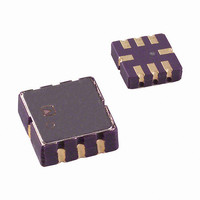ADXL202JE Analog Devices Inc, ADXL202JE Datasheet - Page 12

ADXL202JE
Manufacturer Part Number
ADXL202JE
Description
IC ACCELEROMETER LP 8-CLCC
Manufacturer
Analog Devices Inc
Datasheet
1.ADXL202EB.pdf
(12 pages)
Specifications of ADXL202JE
Axis
X, Y
Acceleration Range
±2g
Sensitivity
312mV/g
Voltage - Supply
3 V ~ 5.5 V
Output Type
Analog
Bandwidth
6kHz
Mounting Type
Surface Mount
Package / Case
8-CLCC
Lead Free Status / RoHS Status
Lead free / RoHS Compliant
Interface
-
Available stocks
Company
Part Number
Manufacturer
Quantity
Price
Company:
Part Number:
ADXL202JE
Manufacturer:
MITSUBISHI
Quantity:
23
Company:
Part Number:
ADXL202JE
Manufacturer:
ADI
Quantity:
717
Part Number:
ADXL202JE
Manufacturer:
ADI/亚德诺
Quantity:
20 000
ADXL202E
USING THE ADXL202E IN VERY LOW POWER
APPLICATIONS
An application note outlining low power strategies for the
ADXL202E is available. Some key points are presented here.
It is possible to reduce the ADXL202E’s average current from
0.6 mA to less than 20 µA by using the following techniques:
1. Power Cycle the accelerometer.
2. Run the accelerometer at a Lower Voltage, (Down to 3 V).
Power Cycling with an External A/D
Depending on the value of the X
is capable of turning on and giving a good reading in 1.6 ms. Most
microcontroller based A/Ds can acquire a reading in another 25 µs.
Thus it is possible to turn on the ADXL202E and take a reading
in <2 ms. If we assume that a 20 Hz sample rate is sufficient,
the total current required to take 20 samples is 2 ms × 20 samples/s
× 0.6 mA = 24 µA average current. Running the part at 3 V will
reduce the supply current from 0.6 mA to 0.4 mA, bringing the
average current down to 16 µA.
The A/D should read the analog output of the ADXL202E at
the X
may be required in any case to amplify the analog output to give
enough resolution with an 8-bit to 10-bit converter.
Power Cycling When Using the Digital Output
An alternative is to run the microcontroller at a higher clock rate
and put it into shutdown between readings, allowing the use of the
digital output. In this approach the ADXL202E should be set at
its fastest sample rate (T2 = 0.5 ms), with a 500 Hz filter at X
and Y
sible and then shut down the ADXL202E and the microcontroller
until the next sample is needed.
In either of the above approaches, the ADXL202E can be turned
on and off directly using a digital port pin on the microcontroller to
power the accelerometer without additional components.
FILT
FILT
and Y
. The concept is to acquire a reading as quickly as pos-
FILT
pins. A buffer amplifier is recommended, and
FILT
capacitor, the ADXL202E
(4.50)
0.177
SQ
R0.028 (0.70)
0.197 (5.00)
8-Terminal Ceramic Leadless Chip Carrier
TOP VIEW
SQ
CONTROLLING DIMENSIONS ARE IN MILLIMETERS
Dimensions shown in inches and (mm).
OUTLINE DIMENSIONS
0.070 (1.78)
0.008
(0.20)
FILT
0.050 (1.27)
0.050 (1.27)
(E-8)
R0.008
(0.20)
CALIBRATING THE ADXL202E/ADXL210
The initial value of the offset and scale factor for the ADXL202E
will require calibration for applications such as tilt measurement.
The ADXL202E architecture has been designed so that these
calibrations take place in the software of the microcontroller used
to decode the duty cycle signal. Calibration factors can be stored in
EEPROM or determined at turn-on and saved in dynamic
memory.
For low g applications, the force of gravity is the most stable,
accurate and convenient acceleration reference available. A reading
of the 0 g point can be determined by orientating the device par-
allel to the earth’s surface and then reading the output.
A more accurate calibration method is to make measurements at
+1 g and –1 g. The sensitivity can be determined by the two
measurements.
To calibrate, the accelerometer’s measurement axis is pointed
directly at the earth. The 1 g reading is saved and the sensor is
turned 180° to measure –1 g. Using the two readings, the sensi-
tivity is:
For example, if the +1 g reading (A) is 55% duty cycle and the
–1 g reading (B) is 32% duty cycle, then:
These equations apply whether the output is analog or duty cycle.
Application notes outlining algorithms for calculating accelera-
tion from duty cycle and automated calibration routines are
available from the factory.
0.050 (1.27)
BOTTOM VIEW
7
5
Let B = Accelerometer output with axis oriented to –1 g then:
Let A = Accelerometer output with axis oriented to +1 g
Sensitivity = [55% – 32%]/2 g = 11.5%/g
0.015 (0.38)
0.015 (0.38)
1
3
0.075
(1.91)
0.025
(0.64)
Sensitivity = [A – B]/2 g
0.099
(2.50)
0.099
(2.50)





